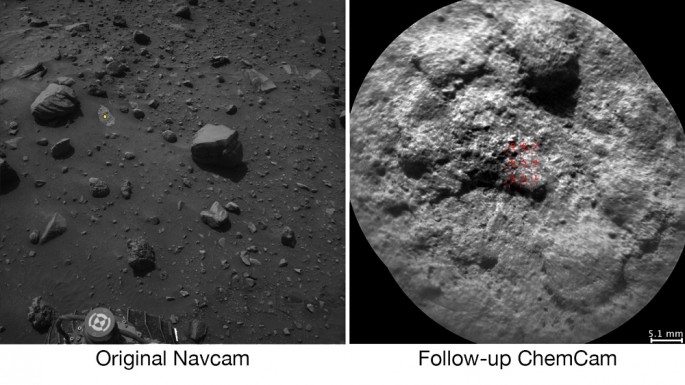Mars has always been on the mind of the astronomers and scientists from around the world to search for possible clues to life beyond Earth. Now, a team of researchers suggests that Martian rocks are a proof that the planet's atmosphere was once oxygenated.
In 2013, NASA's Mars curiosity rover collected a huge sample of rocks present on the Martian terrain. An analysis of the rocks revealed that they were rick in manganese,which should not have been there at all. Now a team of scientists claim that the presence of manganese in rocks on Mars indicates that the red planet's atmosphere was once full of oxygen.
The crust of a majority of planets is composed of basalt. According to Christian Science Monitor, the researchers were expecting to discover basalt on Mars. However, the team found that it was rich in manganese instead.
Although manganese is present in basal in trace amounts, it must be concentrated enough to be present in the amount which was traced back on the red planet. The researchers, thus, concluded that condensed manganese could only form when basal rock is dissolved in oxygenated water.
"If we could peer onto Mars millions of years ago, we'd see a very wet world," researcher at Los Alamos National Laboratory, Nina Lanza, wrote in Discover Magazine. "Yet we didn't think Mars ever had enough oxygen to concentrate manganese - and that's why we thought the data from Caribou must have been an error."
Following the original discovery of manganese in 2013, the researchers sent Curiosity to hunt for more chemical. The rover vaporized chunks of rocks to look for the chemical and it, indeed, discovered more of it.
According to the researchers, there are several ways through which oxygen may have ended up being a part of the Martian atmosphere. One theory suggests that the solar radiation may have split water on the surface of the red planet into oxygen and hydrogen. Because of absence of gravity and magnetic field, the hydrogen atoms could have floated away, leaving behind oxygen, which may have seeped into rocks and turned them red.
Since the appearance of oxygen in Earth took place in a way too different manner, researchers propose that Mars may have evolved quite differently than previously expected.
The following video talks about proof of life on Mars:



























